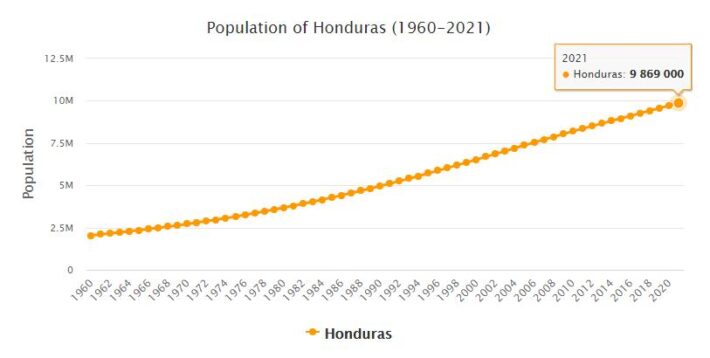Yearbook 2012
Honduras. During the year, measures were taken to reform the police system in Honduras, which has the highest homicide rate in the world and where the corrupt police force has long been considered as a major problem as organized crime. Congress President Juan Orlando Hernández, who also plans to run in the 2013 presidential election, took the initiative in January to change the constitution so that extradition of criminals should be possible and create an independent authority for police reform. In addition, a commission was created, consisting of three domestic and two foreign members, who will be able to investigate police and judicial systems and propose reforms. Hernández was backed by President Porfirio Lobo Sosa in his ambitions and among others. representatives of Chile’s police force (Carabineros) were invited for consultation.
In early May, four people on board a boat near Ahuas in northeast Honduras were shot dead by police helicopters. The four were initially suspected of being drug smugglers but later turned out to be fishermen, and when it was discovered that personnel from the US drug control agency DEA had found themselves aboard the helicopters, the scandal was a fact. In the small town of Brus Laguna, violent demonstrations erupted with the demand that the US DEA personnel be expelled. According to the US State Department, the Americans did not participate in any firefighting, and the DEA also claimed that 79% of all cocaine smuggled into the United States goes through Honduras.
- AbbreviationFinder.org: Provides most commonly used acronyms and abbreviations for Honduras. Also includes location map, major cities, and country overview.
Economy
| Inflation rate | 3.90% |
| Unemployment rate | 5.6% |
| Gross domestic product (GDP) | $ 46,300,000,000 |
| GDP growth rate | 4.80% |
| GDP per capita | $ 5,600 |
| GDP by sector | |
| Agriculture | 14.20% |
| Industry | 28.80% |
| Service | 57.00% |
| State budget | |
| Revenue | 1.974 billion |
| Expenditure | 2.095 billion |
| Proportion of the population below the national poverty line | 60% |
| Distribution of household income | |
| Top 10% | 42.4 |
| Lower 10% | 0.4 |
| Industrial production growth rate | 3.30% |
| Investment volume | 23.5% of GDP |
| National debt | 39.50% of GDP |
| Foreign exchange reserves | $ 4,460,000,000 |
| Tourism | 2014 |
| Visitors | 868,000 |
| Revenue | $ 642,000,000 |
Population 2012
According to countryaah, the population of Honduras in 2012 was 9,112,805, ranking number 95 in the world. The population growth rate was 1.840% yearly, and the population density was 81.4453 people per km2.
The population is made up largely (70%) of mestizos (ladinos), but large groups of indigenous people (20% of the total, approximately) live in the eastern regions (see below), while a few thousand blacks (5 %) is concentrated in the banana area and especially around Trujillo. Creoles and Europeans make up the rest (5%), that is a very low proportion of the total (312 Italians in 1927).
The indigenous element has largely adopted the Spanish language. Tribes exclusive to Honduras are the Paya, almost extinct, living in the eastern part of the republic, the Xicaque (Jicaque) dispersed in the northern part of the region in the Yoro and Cortés departments, and the Lenca in south-western and central Honduras, whose language is now only spoken in a few villages (Guajiquiro, Opitoro, Simalaton). Other groups, not limited to Honduras, particularly interesting are, in addition to the Chorti (see Maya), the Caribs, locally called Morenos, which are composed, for the most part, of zambos and they are the last remnants of the Caribs of St. Vincent, deported by the English following an insurrection in the Roatán island and which from there spread to the coasts of Honduras and as far as Guatemala. Remnants of the Sumo-Mosquito tribe are also found in eastern Honduras. What has survived of the original cultures shows little diversity from the Indian tribes of Guatemala; for agriculture, the shape of houses, clothing, tools, and they mostly belong to a “Nordic” cultural group, while a part of the tribes (Xicaque, Sumo-Mosquito) belong to another civilization, “southern”, which represents the direct continuation of South American conditions. Typically southern is, for example, bark clothing, which was formerly a custom of the Xicaque, and in a particular form: the women wore a narrow skirt and above it a robe that reached the front up to the knees, but behind it was so long that it would drag on the ground if not held up. Of course, the small tribes belonging to the “southern” culture have almost completely lost their old civilization. The base of the indigenous economy is agriculture and the bread is provided by corn. Popular education is minimal: almost all of them are illiterate. Officially the population is Catholic, but under this thin veil many magical practices and many of the ancient agricultural rites persist.
